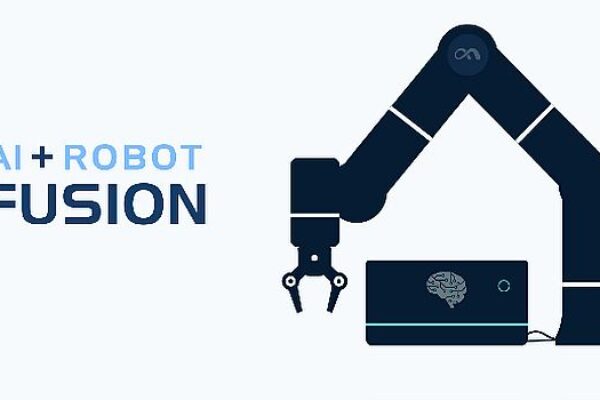
White paper: Adaptive robots and the future of industrial automation
In the white paper, says the company, it forecasts a future in which adaptive robots will revolutionize the world of industrial automation. Such adaptive robots will exhibit high tolerability of position variance, great disturbance rejection, and transferrable intelligence across different tasks allowing them to accomplish complex tasks and accommodate complex environments.
The white paper – ‘Adaptive Robots and the Future of Industrial Automation‘ – outlines the progress from the first industrial robots of the 1990s, ideal for tasks involving repeated trajectories, to that of the collaborative robots (or ‘cobot’), integrated with safety features able to protect humans from hazards in the environment. Both kinds of robots face challenges being able to handle sophisticated tasks that require fine manipulation with “hand-eye coordination,” or to adapt to non-ideal conditions commonly existing in manufacturing lines.
The adaptive robots that the company is developing combine force control, computer vision, and AI to enable more complex tasks, and what is claimed to be an unprecedented level of adaptability – across multiple tasks and a wide variety of workplaces, and in complex environments. Such a powerful level of adaptivity, says the company, offers operators sizeable cost benefits not only from simplified setup and robustness, but from consistency of performance, increased flexibility, simpler production lines, and the redundancy of additional safety measures, equipment, or programming upgrades.
The white paper points out two key factors crucial to achieving adaptivity: force control technology with high accuracy and fast response; and ‘hierarchical intelligence.’ The force control methodology that the company has developed to accommodate the needs of its robots’ force-guided tasks differs from that of traditional force control, says the company, resulting in unprecedented levels of performance in accuracy and response.
‘Hierarchical intelligence’ refers to a hierarchical structure of the robotic system, in which different layers of intelligence (recognition, movement, force application, etc.) are relatively independent, so that a robot can perform tasks like a human. Compared with non-hierarchical intelligence, such as end-to-end deep learning, hierarchical intelligence adapts to more complex tasks and environments, operates despite external disturbance and human interference, and can be transferred to new tasks in new places.
The real potential of AI in robotics, says the company, has not yet been fully exploited, and it may not be long before the AI of an adaptive robot will be able to understand the world and solve practical problems in a new dimension beyond the current realm of computer vision alone. The white paper offers an example of a robotic arm polishing a curved object – the arm must quickly adapt to the shape of the object then adjust in a smooth manner its force and movement output, while managing any unpredicted disturbances in the environment.
According to the company, in proof-of-concept trials underway with world-leading manufacturing firms, its robotic arm ‘Rizon’ has been shown to successfully accomplish complicated tasks while significantly improving the level of flexibility in manufacturing plants. The company’s first applications to be launched to market will include plugging and assembling, curved-surface processing, as well as flexible picking and sorting.
The company is developing customized solutions able to be applied across a wide variety of industries including manufacturing, logistics, healthcare, retail, and more.
Related articles:
Smart innovation fund targets AI, automation
Sensors, AI promise to boost uptime in industrial robotic systems
AI system lets robots teach themselves to see
Low-cost, human-friendly robot is designed for AI
 If you enjoyed this article, you will like the following ones: don't miss them by subscribing to :
eeNews on Google News
If you enjoyed this article, you will like the following ones: don't miss them by subscribing to :
eeNews on Google News




